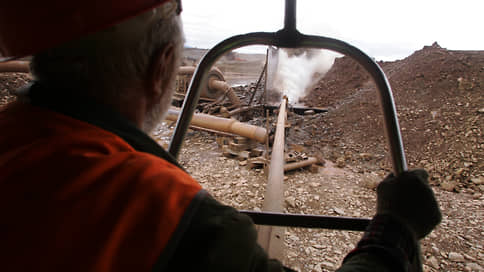Gold ore deposits – Newspaper Kommersant No. 8 (7453) dated 01/18/2023
[ad_1]

The Russian gold mining industry, despite the sanctions, was able to reorient exports and show a slight increase in production at the end of the year, Kept analysts believe. However, the exit from traditional markets has led to an increase in the cost of production, which is negatively affected by the rise in the cost of logistics, labor and energy resources. According to analysts and experts, the ruble exchange rate will be an important competitive factor.
Russian gold mining companies have successfully redirected metal exports to Asia against the backdrop of sanctions, albeit with rising costs, follows from the January review of Kept, which Kommersant has read. Reorientation of exports contributes to the record demand for gold from the world’s central banks.
Traditionally, 80% of the gold produced in Russia was exported to the UK through the channels of the London Precious Metals Market Association, however, in the spring of 2022, the latter withdrew the good delivery status from Russian refineries. Then the UK, US, Japan, Canada, Switzerland and the EU banned the import of Russian gold. Under these conditions, Russian companies were forced to start reorienting their exports. The review says that in March last year, exports to Turkey intensified, in May-June supplies to China, Hong Kong, Thailand and India began to increase. At the same time, Kept notes that Russian producers retain the possibility of deliveries to unfriendly countries due to the refining of gold at enterprises in Kazakhstan or the UAE, which have the status of good delivery.
The refusal of Western countries from Russian gold led to a significant reduction in metal production in the Russian Federation in the first half of 2022 – by 6.7%. Subsequently, the dynamics again became positive: in January-November, according to Rosstat, production increased by 1.8% year-on-year. However, the exit from traditional markets has increased the costs of companies. Producers explain the increase in costs by a decrease in the gold content in the processed ore, an increase in the cost of consumables, an increase in wages, and an increase in the tax burden on a number of deposits. Exporters in new markets often have to deal directly with buyers, which incurs additional marketing and logistics costs. At the same time, the fall in global gold prices and the discount that Russian companies are forced to offer to customers in Asia negatively affect earnings.
Kept expects gold mining costs to rise this year as well. According to Kept, companies focused on the domestic market will show the best results in 2022. However, one should not expect an increase in competition for a share in the domestic market. “Gold miners in the domestic market each work with their own set of banks, so financial institutions will most likely compete for their clients,” says Georgy Puchnin, deputy director of the Kept market research group. credit organizations. A spokesperson for Polymetal declined to comment.
The speed of adaptation in the industry last year was due to several factors, says Sergey Kashuba, head of the Union of Gold Producers of Russia. “Firstly, it is represented by private companies, which are more flexible to various changes. Secondly, everyone has experience of overcoming several crises. In addition, all companies had a margin of safety accumulated over the past years, which, however, is running out. But there are two negative points that are difficult to influence – these are discounts and a strong ruble. Gold mining will be stable, but the exchange rate should be around 70-75 rubles. per dollar,” says Mr. Kashuba. At the end of 2021, gold production in Russia amounted to 363.5 tons.
Costs are indeed rising, says Mikhail Leskov, Development Director of the Institute of Geotechnologies. According to him, the time between mining and selling the metal is increasing, which increases the cost of storage. In addition, companies are forced to look for several export options at once in order to be more protected. All this is happening against the backdrop of rising energy and labor resources, rising costs for the purchase and maintenance of imported equipment, which has not yet been replaced. “The industry is adapting, although small companies may be more sensitive to difficulties, which are forced to look for opportunities to cooperate with large players,” he said.
[ad_2]
Source link





